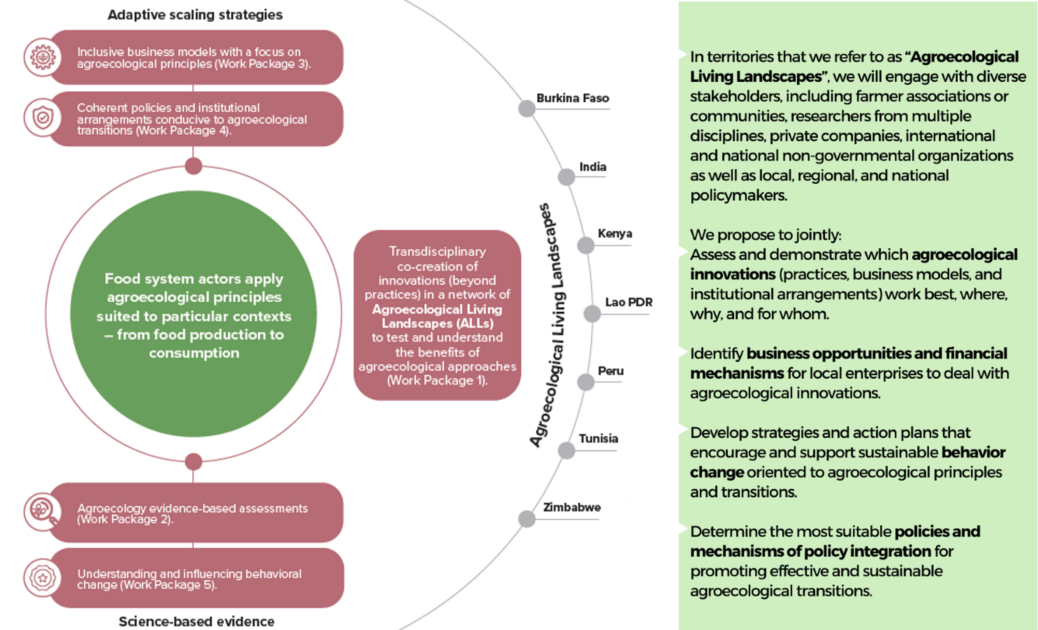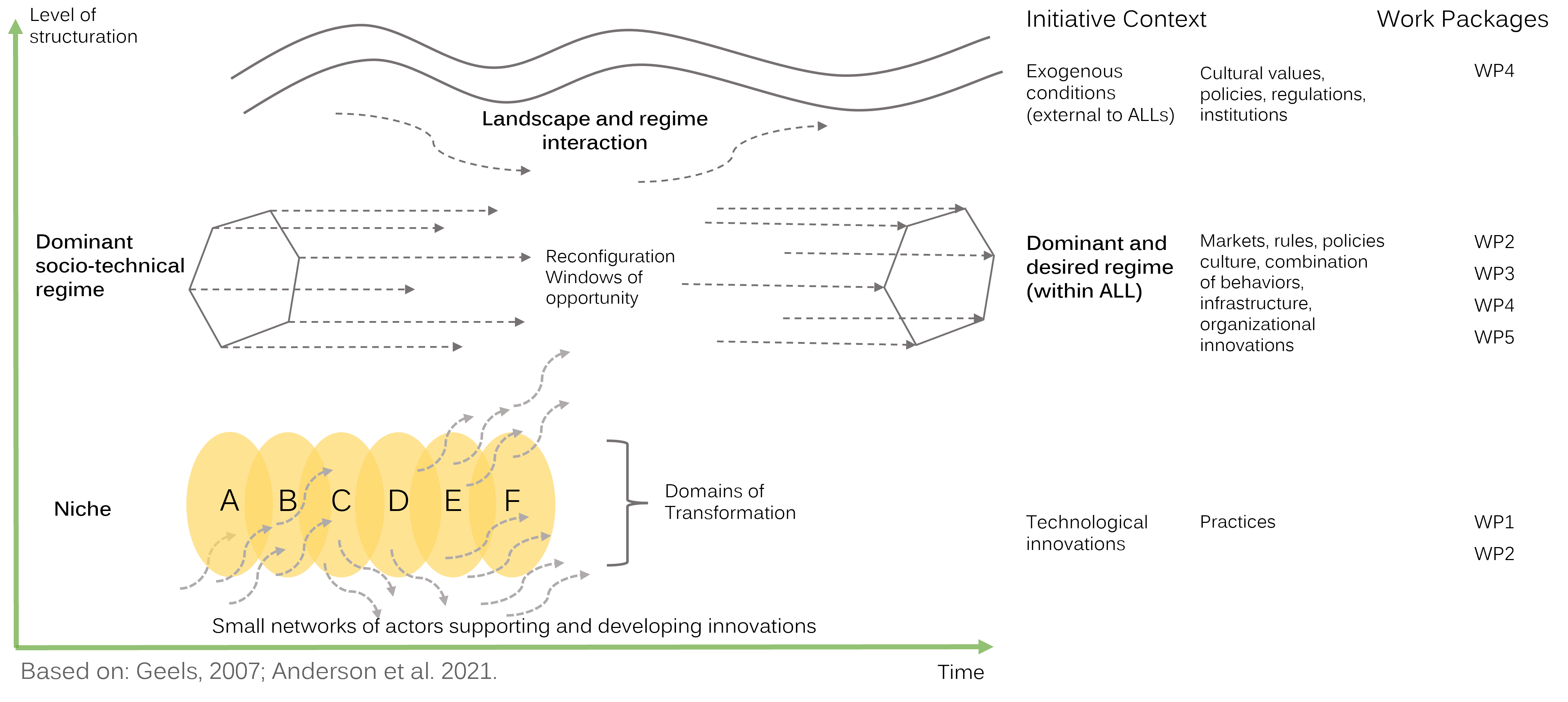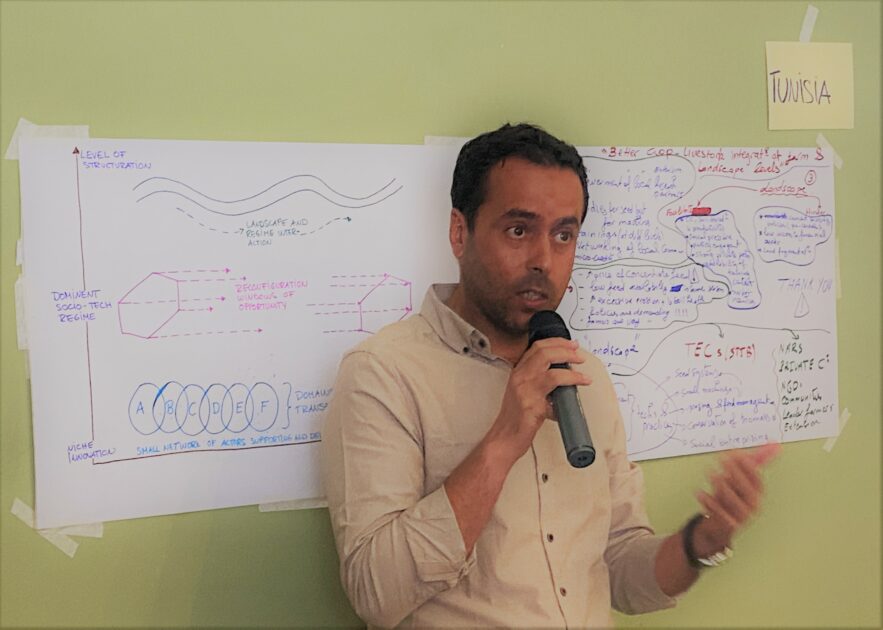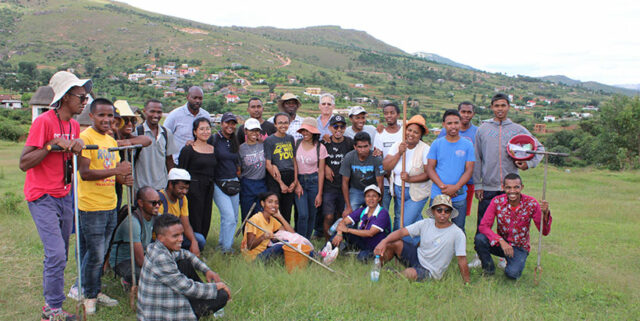
Agroecology is gaining momentum. The CGIAR Initiative on Agroecology can be seen as a strong commitment by CGIAR, partners and investors who believe in the potential of agroecology to combat the inherent fragility of food systems worldwide as well as the negative impacts of climate change and conflict over natural resources and social inequities.
To date, the initiative unites more than 100 collaborating researchers from eight CGIAR centers, CIFOR – ICRAF, and CIRAD along with partners in seven countries: Burkina Faso, India, Kenya, Laos, Peru, Tunisia, and Zimbabwe. Eight organizations, farmers associations and networks have already been formally engaged in the implementation of the initiative since the official kick-off in March 2022, and another seven agreements are currently under way. In addition, the Initiative cooperates with key stakeholders for scaling and impact including the Transformative Partnership Platform on Agroecology (TPP), GIZ, Biovision Foundation, and national authorities.
While CGIAR has several past and ongoing research experiences on agroecology it is the first time that such an ambitious initiative is being supported, in a way that integrates capacities across the CGIAR and with partners. This is one of the reasons why the Initiative leadership invited project members for an early Pause & Reflect workshop that was held in Kenya in October 2022, only six months after the official kick-off. The event united the leaders and co-leaders of the five work packages and the coordinators of all seven countries as well as partner representatives from Burkina Faso, Kenya, and Zimbabwe to share first experiences and assure effective interaction among countries and work packages.
Each work package and country team of the initiative is executed by a multidisciplinary team composed from different organizations, so that the opportunity to bond among the team and harmonize approaches was welcomed by participants.

From an initiative-level vision to specific country-level agroecological transition pathways
The first 3 days of the weeklong workshop were aimed at making progress as a team on the process of creating Agroecological Living Landscapes (ALL), key niches for innovation in the initiative. ALLs are a vehicle for a diverse set of actors who are part of the territorial food systems and landscapes to exchange their views and knowledge, co-develop and adapt agroecological innovations. The ALLs will integrate agricultural, environmental, and socio-economic research as part of a continuous innovation cycle with a territorial approach. Partners will be involved in the design of agroecological adaptive scaling strategies and in multi-stakeholder dialog to promote these.
For this, the team discussed particularly the stakeholder mapping (see presentation) and visioning exercise with actors, and initiated the co-design of technical agroecological innovations. “These steps are crucial because they help us to understand stakeholders’ vision of system change, the potential agroecological transition pathways, and the entry points for the contribution of the initiative to that change. This understanding is important to design the strategies of impact assessment of agroecological innovations and of the whole initiative as such”, says Marcela Quintero, the leader of the initiative.
The team aims to represent the ALL stakeholders vision of system change, embracing agroecological principles and transition pathways that describe how agriculture or food systems would change over time to become more environmentally, economically sustainable, and socially equitable. “By using the innovation transition framework, we want to motivate our team to share their ideas on how they believe transition pathways will occur in their countries, based on their conversations with relevant country actors”, Quintero says.
Transitions may focus on the application of agroecological principles (HLPE report on Agroecology), and encompass different parts of the food systems, for example, farming, business models, services provided, consumption, etc. Depending on local context, the Agroecological Initiative (AE-I) conceptualizes three possible transition pathways, namely: (i) agroecological ‘intensification’ (for low-production systems with low inputs); (ii) the ‘re-design’ of small-scale farming (for low profitability systems with high external inputs); and (iii) ’conversion’ (for profitable farms with high negative social and environmental impacts).
The transition pathways model and its adaptation to the Agroecology Initiative
During the workshop, participants worked on plausible transition pathways for each country. The aim of the exercise was to “detect the most relevant leverage points in each Agricultural Living Landscape that will trigger the agroecological trajectories that have been occurring in the countries”, said Guillermo Orjuela, a Senior Research Associate at the Alliance Bioversity-CIAT.

The above figure shows the (socio-technical) regime that includes a set of routines, mindsets, practices and technologies, regulations, etc. For the purposes of the initiative, the current regime is shaped by policies, financial and business models, and agent behaviors. This current regime influences and stabilizes the technological trajectories and practices that organizations and farming households adopt and develop (Geels, 2002). Thus, the current regime shapes how actors co-design and think about the technologies and practices that are adopted and what their designs will look like.
The figure also shows the niche, which constitutes the relationships where co-created innovations emerge. The niche is a space where diverse actors share knowledge and interact to think of alternative technologies and practices for those developed in the current regime and that contribute to agroecological principles (Wezel et. al., 2020). From the niche, ideas can emerge that the current regime would otherwise undervalue. The landscape represents the enabling conditions that need to be considered for the transition path to occur.
Transitions occur through interactions between processes at these three levels (Geels & Schot, 2007). The initiative, through its Work Packages, will contribute to the transitions from a current regime to a desired regime. For example, interventions co-created with farmers will emerge and simultaneously change at the landscape level, impacting beliefs and routines, and will allow new technologies or practices to be adopted and scaled up.

Adaptability, the key to the Initiative’s success
The Nairobi workshop was a team effort to explore and put transition pathways into practice, as well as to think about their monitoring, evaluation and impact assessment. The impact assessment strategy will focus on the evaluation of the changes produced by the Initiative and on the provision of a baseline to evaluate long-term impacts. “Impact assessment will not rely on a one-size-fits-all approach,’ says Carolina Gonzalez, lead of the impact assessment team. “While we start with a general methodology, we will have different impact assessment emphases depending on the transition pathways, the agroecological principles, and co-created interventions in Living Landscapes. We will support the understanding of the causal mechanisms of how co-creating innovations lead to the achievement of the outcomes in different contexts,” says Gonzalez.
Adaptability is indeed key as the Initiative will shape its activities over the coming months. Because the establishment of the Living Landscapes are at the heart of the initiative, all work packages are playing a key role in their emergence and are adapting to the innovative focus of each Living Landscape. The understanding of transition pathways will sharpen with further stakeholder engagement and understanding of the local context. The increasingly strong partnerships with local implementing and scaling partners will contribute to the sustainability of the transitions. The creation of an international network of Living Landscapes in year 2 of the initiative will allow the team to compare and contextualize agroecological innovations based on agroecological assessment in each country.



